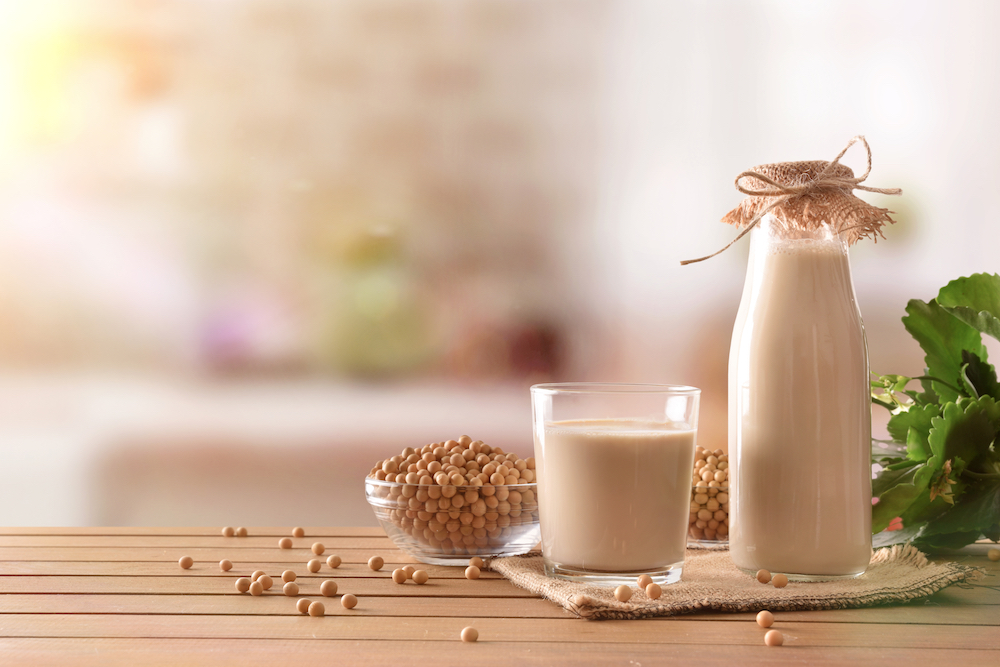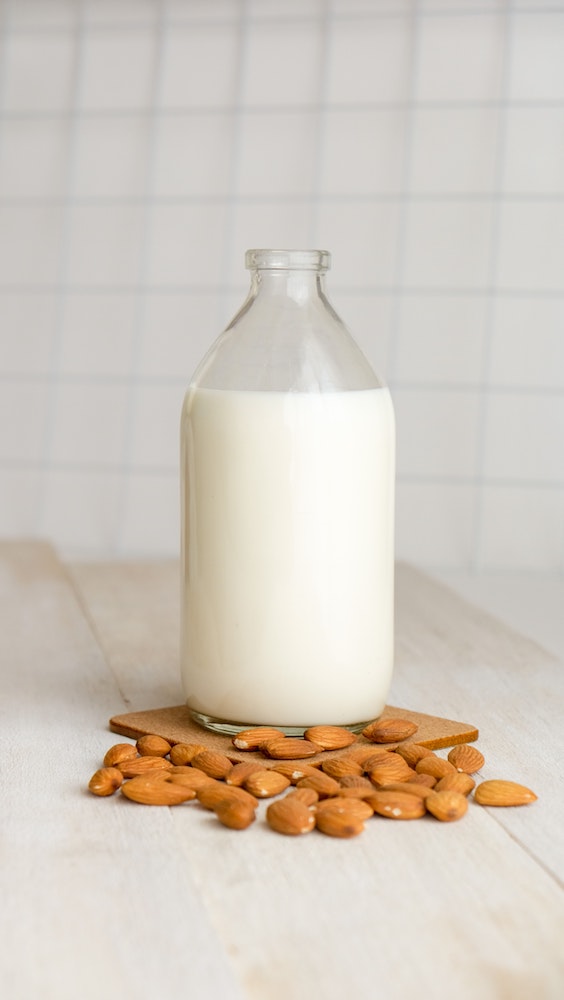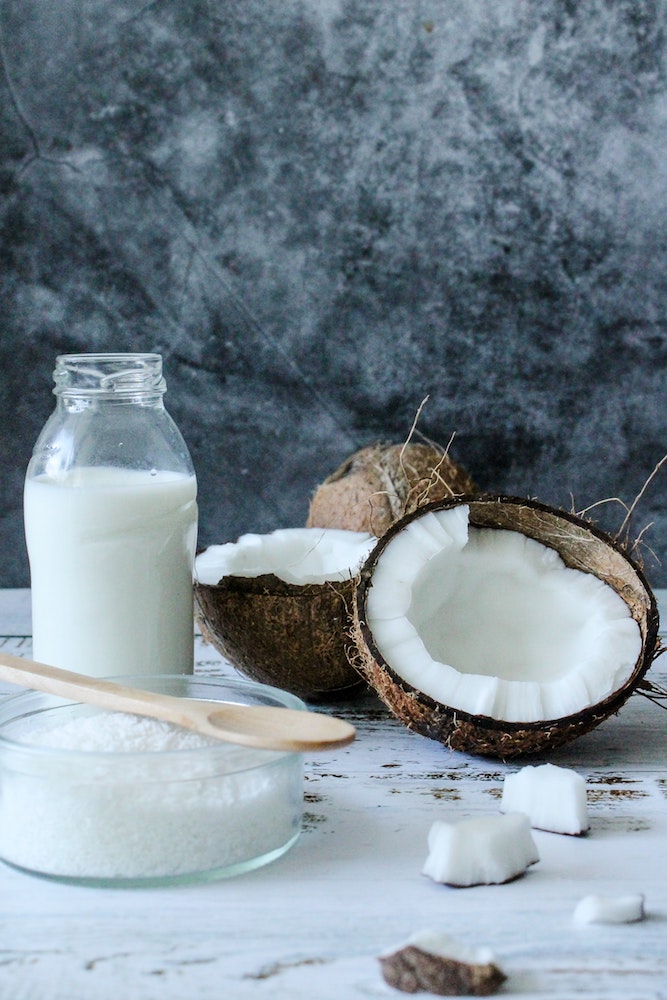
It’s not just hippie vegans who use plant-based milk anymore!
People with allergies, health-conscious individuals, environmentally-conscious people, or people who just don’t like the taste of cow milk all consume dairy alternatives. (Of course, us hippie vegans also still use it!)
In the United States alone, people purchased two billion dollars of milk alternatives in 2019! Additionally, the sales of dairy milk are falling. The market grew 61 percent from 2012 to 2017, making up 13 percent of the milk market in 2017. And each year, new types of milk being released onto the market.
While most people still buy dairy milk, plant-based alternatives are very popular.
So what is the difference between all the different kinds of plant-based milk out there? What’s the best for baking? What’s the best-tasting one? Let’s find out!
Is it really milk?
Okay. A note before we start, to get it out of the way. A lot of companies don’t actually refer to these products as “milk,” but rather, names like “organic soy beverage.” The reason being, there have been disputes about whether vegan products can legally be called milk.
However, I will be referring to these products as milk throughout this blog post, as this is frankly a stupid argument. I have never called it “organic soy beverage,” except to be sarcastic.
And while these products don’t literally come from the udder of an animal, nor do they have the exact same nutritional content, they can be used anywhere you use dairy milk: with cereal, to bake desserts, to make soup creamy, to dip your cookies in.
That’s milk to me.
So how is it made?
Big manufacturers make plant-based milk by using many machines. It’s rather complicated to explain the whole process succinctly, so please enjoy this very satisfying “How It’s Made” video (and be entertained by how many times the narrator says “beverage”).
While it’s a lot easier to buy milk from the store, you can also make your own plant milk from scratch! (Here are some easy recipes to make soy milk and almond milk.)
Basically, you need to blend the main ingredient (i.e. almonds, oats, soybeans, etc.) with water in a high speed blender. After blending until creamy and smooth, strain the mixture through a cheesecloth or nut milk bag. Some ingredients like soybeans aren’t safe to eat if they haven’t been cooked, so you may also need to cook it on the stovetop.
One plus side to making your own milk is that you can control what goes into it. If you have serious allergies and can’t handle cross-contamination, this is a good option. You can also flavor your milk to your own liking, adding in ingredients like dates, vanilla, salt, or cocoa powder to give extra flavor.
But one downside to making it yourself is that it only stays good for three or four days. Manufactured plant milk is homogenized and contains preservatives so that it’s shelf-stable and stays good for a longer time (up to a year).
It’s also just easier to go to the store and buy a few boxes to have on hand. I don’t make my own milk out of laziness, but it’s definitely an option if you have the extra time or you’re really trying to avoid food additives.
What Varieties Are Out There?
As a kid, I remember being a big fan of chocolate soy milk. It had a kinda funky flavor compared to chocolate cow milk, but I liked it well enough and would have a box with lunch.
Back then, soy milk was the biggest plant-based option on the market. But over this past decade, plant-based milk varieties have exploded into the marketplace.
As well as soy, you can now find plant-based milks made from almonds, cashews, oats, rice, coconut, hemp, hazelnuts, pecans, and many others. And while having all of these options is amazing – especially for people with allergies to soy and nuts – it can also be overwhelming.
Which milks taste the best? Which ones work the best for baking? What type should I choose?!
Let’s find out!
Soy Milk
Soy milk has been around for a long time, but there’s a good reason for that. It has the most similar texture to cow’s milk, as well as the most natural protein of all of the non-dairy milk varieties.
Protein is important in giving baked goods (especially cakes and breads) a good texture and structure. It also helps baked goods brown.
Therefore, it’s one of the best plant-based milks when it comes to baking.
However, soy milk does have a distinctive taste that not everyone likes, and that may turn you off of it.
There is also some question about whether soy is bad for your health. That’s an issue that’s too complex to get into in this humble blog post, but it’s definitely something that you should do your own research on to see if soy products are right for you!
If you do decide to go with soy milk, I would advise that you stick with organic soy milk to avoid potential issues with pesticides (GMO soy is known to carry more pesticide residue than organic).
Nut Milks (Almond, Cashew, Pecan, Hazelnut, Walnut, etc.)

Almond milk is the most popular non-dairy milk out there today, with 61% of sales. It’s got a very mild flavor that doesn’t stand out from cooking or baking. It also has a nice consistency that takes well to baking. It gives good structure to baked goods, and I’d recommend it as an overall good option.
Other nut milks have come onto the market in recent years. While their overall flavor and nutritional profiles vary a little, nut milks tend to be naturally sweet and have a nutty flavor. This works well for sweet baked goods.
One downside to nut milks is their environmental footprint. Almonds especially are a water-heavy crop compared to a lot of the other plant milks on this list.
However, keep in mind that it takes a hell of a lot more water and land in order to raise cows for milk and meat. So it’s overall a more environmental choice to drink almond milk and limit your animal product consumption, than to eat the Standard American Diet.
Coconut Milk

Coconut milk is generally found in cans (although boxed and powdered versions do exist and may be more common where you live).
Unlike other varieties of non-dairy milk, coconut milk is very different. Generally, it is thick, creamy, and deliciously coconutty. If you open it before shaking it up, you’ll find that it separates into a heavy cream at the top, and a watery liquid at the bottom.
It also comes in full-fat and light varieties. I personally prefer the full-fat version. It’s creamier and makes for richer desserts and meals.
While canned coconut milk is too rich and thick to substitute for regular milk, it is your best choice for a heavy cream substitute. It can be whipped up just like heavy dairy cream. It’s great for desserts, as well as soups and curries.
One thing to note: there’s also a refrigerated, boxed version that I’ll call “coconut beverage.” It’s a watered down version of coconut milk and more similar in texture to other plant-based milks. However, it usually has a bunch of additives and sweeteners, if you’re looking to avoid that sort of thing.
If your recipe calls for coconut milk, don’t use coconut beverage! It won’t provide the fat content and flavor that you need. Coconut beverage is also not a great choice for baking because of its high water content. However, if you want a nice, coconutty milk to put in your coffee, it’s a good choice.
Oat Milk
Oat milk gained a lot of traction in 2019 when coffee shops started using it. That’s for good reason; oat milk blends into hot liquid a lot better than many other plant-based milks (other types of milk, like almond, will even separate in hot liquid, which isn’t very palatable). It gives hot coffee and tea a good, creamy taste.
Oat milk has also been praised for being environmentally friendly. Oats don’t need a lot of space or water to grow, so compared to most other milks, oat milk has a small footprint.
When it comes to baking, it works okay. Soy and almond milk seem to work more consistently, and oat milk can struggle to produce proper texture in quick breads. Full-fat oat milk tends to work the best in baking.
Pea Milk and Hemp Milk
Pea milk and hemp milk are both new on the scene.
Both of these options have high protein contents, similar to soy milk, making them a good choice for baking and cooking. And if you’re worried about potential health issues associated with soy, these options may interest you.
However, they both have distinct flavors, and you may need to sample them before deciding that they’re the right choice for you.
Rice Milk
Rice milk has a very high water content, with almost no fat or protein. It’s also among the sweetest milks.
On the plus side, rice milk is great for people with a lot of allergies. It also seems to work well for making drinks.
However, it’s not good for baking. It’s thin and unreliable to bake with, and you may need to experiment with adding extra thickening agents in with your recipes should you really want to use it.
Flavored or Non-Flavored?
A lot of non-dairy milks come in flavored and non-flavored varieties.
Generally, “flavored” equals vanilla. (Many brands also have a chocolate variety, though that’s obviously more of a drinkable choice than something you’d cook with.) If you’re primarily baking sweet things, a little extra vanilla flavoring isn’t a bad thing! Vanilla milk also tastes good with cereal.
Some flavored varieties are also sweetened.
For baking, sweetened milk isn’t that big of a deal and won’t stand out with other sugar in the mix. I would still recommend non-sweetened so that you can better control the amount of sugar that goes into your baked goods. (I also personally tend to avoid sweetened drinks to avoid excess sugar intake.)
So where does flavored milk not work? Savory baking. Vanilla flavoring definitely stands out in a bad way. Whether it’s the crust for vegetable pie, batter for breading eggplant parm, or adding creaminess to your favorite soup, having a touch of vanilla can be funky.
Unflavored milk is an all-around good option if you want to avoid any trace of vanilla flavor in your baked goods and cooking.
So what milk should I choose?
What’s the final conclusion? Which milk is best?
Well… I can’t give you a definitive “best” choice, unfortunately. Sorry!
For my own personal kitchen, I would go with soy milk or almond milk, as they have a nutritional profile that works well for baking. They also tend to be less expensive than other types of milk.
But the thing is, everyone has different priorities when it comes to choosing a favorite product. Some people prioritize flavor, others environmental impact, while others have allergies to contend with. Certain types of milk (especially new entries onto the market) can be quite pricy, so you may choose based on your wallet.
Ultimately, the best milk for your household is the one that you think tastes and works the best.
I would recommend sampling a few and experimenting with them in your baking and cooking. What works best for your needs and palette?

Leave a Reply
You must be logged in to post a comment.